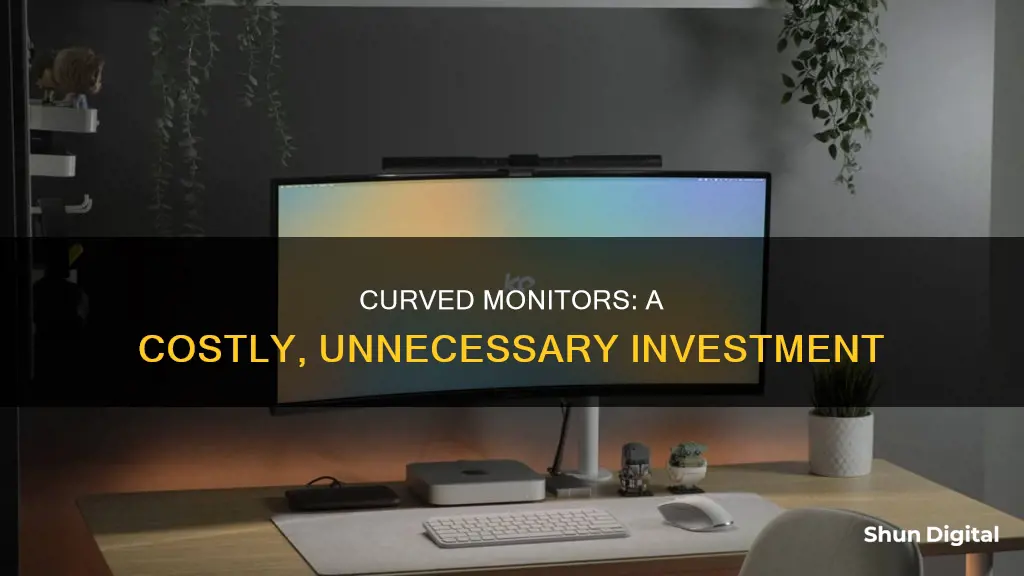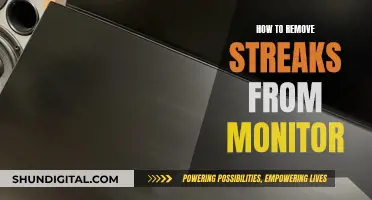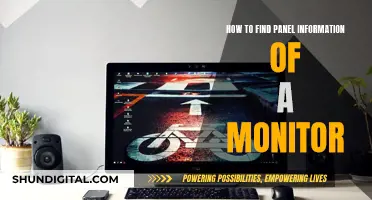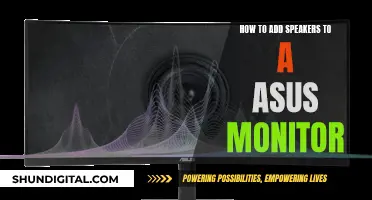
While curved monitors offer a more immersive viewing experience, there are several reasons why you might not want to buy one. Firstly, they are more expensive than flat screens, and the benefits of a curved screen are only noticeable on monitors that are at least 30 inches or more. Additionally, curved screens are not wall-mount-friendly and work best when you sit directly in the centre of the display. They also have a unique look that some people may not prefer. Furthermore, if you are a designer who works with straight lines, a curved monitor may not be the best choice as it can make straight lines appear distorted. Lastly, while curved monitors offer a wider field of view, they are also more prone to glare from certain angles.
| Characteristics | Values |
|---|---|
| Cost | Curved monitors are more expensive than flat screens |
| Wall-mounting | Curved screens are difficult to wall-mount |
| Size | Curved screens need to be large to be effective (30 inches or more) |
| Glare | Curved screens are prone to glare from multiple angles |
| Distortion | Curved screens can cause distortion when viewed off-centre |
| Field of view | Curved screens offer a wider field of view |
| Immersion | Curved screens are more immersive |
| Eye strain | Curved screens can reduce eye strain |
What You'll Learn

They are difficult to wall-mount
One of the biggest drawbacks of curved monitors is that they are difficult to wall-mount. Unlike flat screens, which can be easily mounted flush to a wall, curved screens require specific mounts and careful positioning. This is because the curved shape of the monitor means it cannot sit flat against the wall and must be kept at a certain distance from it.
While there are mounting options available, such as tilt and swivel brackets or adjustable arm mounts, these do not resolve the issue of the monitor jutting out from the wall. This can create a strange visual effect, as the curved screen sits in front of a flat wall. As a result, some people may find that a wall-mounted curved monitor is not aesthetically pleasing.
In addition, the curved design of these monitors can make it challenging to find the right position for viewing. The optimal viewing position for a curved monitor is typically directly in front of the screen, in the centre. If the monitor is wall-mounted, this may require the viewer to sit at a specific distance from the wall, which could be impractical in some spaces.
The difficulty of wall-mounting a curved monitor is a significant disadvantage, especially for those who want to save space by mounting their monitor on the wall. It is important to carefully consider the available space and viewing position before deciding to purchase a curved monitor.
Differentiating DHI and UHD Monitors: A Quick Guide
You may want to see also

They are more expensive
One of the most significant drawbacks of curved monitors is their cost. They are generally more expensive than their flat counterparts, with prices that can deter potential buyers, especially those on a budget. The higher cost of curved monitors is a result of their unique design and the benefits they offer, such as enhanced immersion, reduced eye strain, and improved focus and comfort.
Curved monitors can cost several hundred dollars, and even the most budget-friendly options tend to be around $300. The price increases with the size of the screen and additional features such as G-Sync, higher refresh rates, and blue light filters. For example, the Alienware 34 QD-OLED curved monitor costs $1,299, while the Acer Predator X34 can range from $1,000 to $1,400. The higher cost of curved monitors may be a significant consideration for those who are price-conscious or have a limited budget for their purchase.
In addition to the upfront cost of the monitor, it is important to consider the additional space requirements that curved monitors demand. Their larger physical footprint means they occupy more desk space and may not align well with certain mounting systems or multi-monitor setups. The curvature of the screen can also create a strange visual effect when mounted on a wall, as the monitor is not flush with the flat surface. As a result, curved monitors may not be the best option for those with limited desk space or those who prefer a sleek and streamlined setup.
Another factor to consider is the adaptation period that may be required when transitioning from a flat to a curved monitor. Some users might find the curvature initially uncomfortable or unusual, affecting their overall usability and experience. This adjustment period can vary from person to person, and it is worth testing a curved monitor before purchasing to ensure it meets your needs and preferences.
Monitoring Memory Usage: NRPE Nagios Guide
You may want to see also

They are not ideal for graphic design
While some sources claim that curved monitors are suitable for graphic design, others disagree. Here are some reasons why curved monitors may not be ideal for graphic design work:
Firstly, curved monitors can distort straight lines. This can be problematic for designers who need to work with precise lines and shapes. The curvature of the screen can affect the accuracy of these lines, especially when viewed from extreme angles. This issue is less prevalent on flat screens, making them a more reliable choice for graphic design work.
Secondly, the immersive nature of curved monitors may not be necessary for graphic design tasks. The enhanced level of immersion offered by curved displays is often geared towards gaming or multimedia consumption. For graphic design work, a standard flat screen may provide a more practical and familiar workspace.
Additionally, curved monitors can be more challenging to wall mount due to their shape. They require specific mounts and positioning, and they tend to protrude further from the wall than flat screens. This can be a drawback for designers who prefer a sleek, mounted setup or have limited desk space.
Another consideration is the higher price tag of curved monitors. They can be significantly more expensive than their flat counterparts, even for budget options. For designers on a tight budget, a flat screen may be a more cost-effective choice without sacrificing quality or performance.
Lastly, the curvature of curved monitors can cause glare at certain angles. While they generally reduce glare and reflections, curved screens are prone to glare when light hits them from various angles. This can be difficult to manage, especially in workspaces with multiple light sources. Flat screens, on the other hand, are less likely to face this issue.
Cleaning Your LCD Monitor: Step-by-Step Guide
You may want to see also

They can be susceptible to glare
While curved monitors have their benefits, they can also be susceptible to glare. This is due to the geometry of their curvature, which can cause reflections of ambient light sources, resulting in unwanted glare on the display. This is particularly noticeable when compared to a flat-screen monitor, which projects light at a single uniform angle.
To mitigate this issue, it is important to be mindful of the position of the monitor and to avoid placing it opposite windows or lights. Adjusting the lighting conditions in your workspace can also help reduce glare. Additionally, using anti-glare filters or coatings on the screen can be effective in minimising this issue.
The impact of glare on a curved monitor can be distracting and may lead to eye strain over extended periods of use. Therefore, it is crucial to position the monitor carefully and optimise the lighting conditions to minimise glare and ensure optimal viewing conditions.
While curved monitors offer an immersive viewing experience, their susceptibility to glare is a potential drawback that should be considered when deciding between a curved or flat-screen monitor.
Troubleshooting Red Light on ASUS Monitors
You may want to see also

They may not be worth the extra cost
While curved monitors offer a more immersive viewing experience, there are several reasons why they may not be worth the extra cost.
Firstly, curved monitors are generally more expensive than flat monitors with similar specifications. If you are on a tight budget, you are likely to find a flat-screen model with the same specs for a lower price. This is especially true for larger curved monitors, which tend to have higher price tags.
Secondly, curved monitors may not be ideal if you plan to use multiple displays or have limited desk space. Their curved design can make it challenging to stack multiple panels together seamlessly, resulting in bigger gaps between the panels compared to flat monitors. Additionally, curved monitors typically have a larger physical footprint and can occupy more desk space, making them less suitable for smaller workstations.
Thirdly, the benefits of a curved monitor are most noticeable on larger screens, preferably above 30 inches. Anything smaller may make the advantages of a curved monitor harder to spot. If you are considering a curved monitor for its immersive qualities, it is essential to factor in the increased cost and space requirements.
Lastly, the curvature of a monitor may not be to everyone's taste, especially when wall-mounted. The curved design can appear strange when mounted on a flat wall, as the sides may not sit flush against the surface. In such cases, a flat monitor might be a more aesthetically pleasing and mount-friendly option.
Curved Monitor Sizes: Understanding the Options
You may want to see also
Frequently asked questions
Curved monitors are more expensive than flat screens and are harder to wall mount. They also need to be quite large (at least 30 inches) for you to notice the benefits of the curve, and they only really work for one person sitting directly in front of the display.
No, in fact, the opposite is true. The curvature of the screen means your eyes can take in everything at once without strain.
Curved monitors can make gaming feel more realistic and less two-dimensional. However, this only works if you're sitting directly in front of the screen. If you're sitting off-centre, things can look distorted.
Curved monitors can be more immersive than flat screens, giving you a wider field of view and reducing distortion. They also reduce glare and reflections.







